The Potato in Fine Art
Do you prefer your potatoes in a landscape or in a still life or in a stew? Come with me on a tour of the humble potato in art.
Candy Bedworth 16 October 2024
Cast the first stone they who do not love to get home and enjoy a good drink after a tiring day of work. Or find friends at a happy hour to share something to drink with, why not? It could be coffee, tea, whisky, or beer, it does not matter. What matters is always having a good drink within your reach. And there were a few painters who represented delicious (and dangerous) drinks in their artworks. So, prepare your tea, sit back, and relax while I show you some of the most interesting drinks in art.

So, what’s your favorite drink? I particularly like coffee and tea. Coffee was my companion during my long days and endless nights in college and to this day is my best friend at work. Where I come from, coffee is almost a family drink. It’s the drink we’ve shared at home since I remember. After lunch, my father used to make some coffee and we would go, me and my brother, sit down and drink it with him.
In At The Coffee Table, Edvard Munch presents a couple, not so young, sharing this hot, dark drink. Munch was only 20 years old when he painted this work, but it is already possible to note the Expressionist aesthetic that would be soon striking in his later paintings.
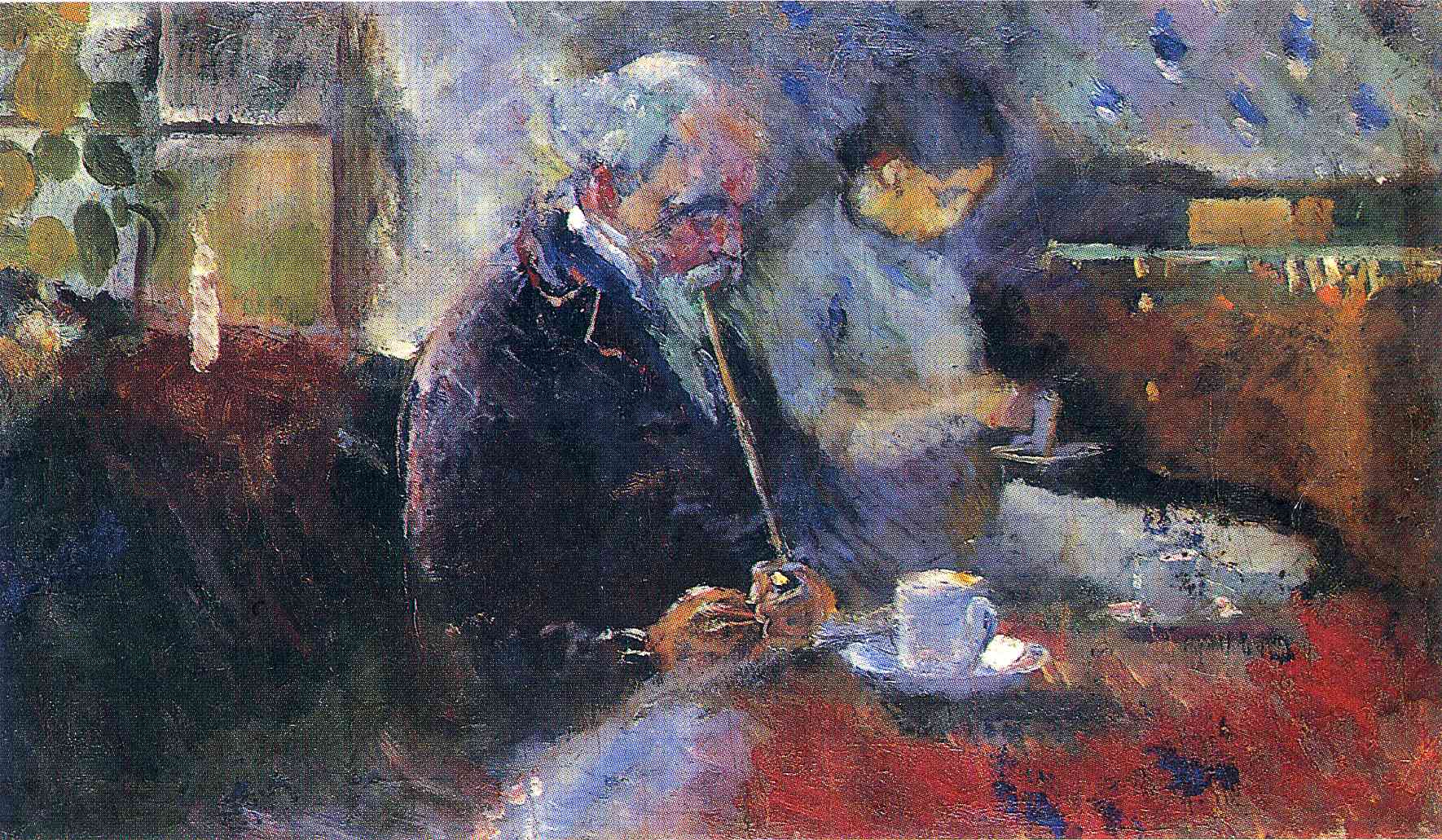
But, as I’ve said before about my college days, sometimes we cannot share the coffee, and we’re left alone with it. Henri Matisse, who painted the artwork that opens this article which shows two people who are probably expecting the third participant in the coffee ritual, also portrayed the loneliness of drinking coffee, which affects us all: in Laurette’s Head With a Coffee Cup, he shows us the young woman lying down with tired eyes.
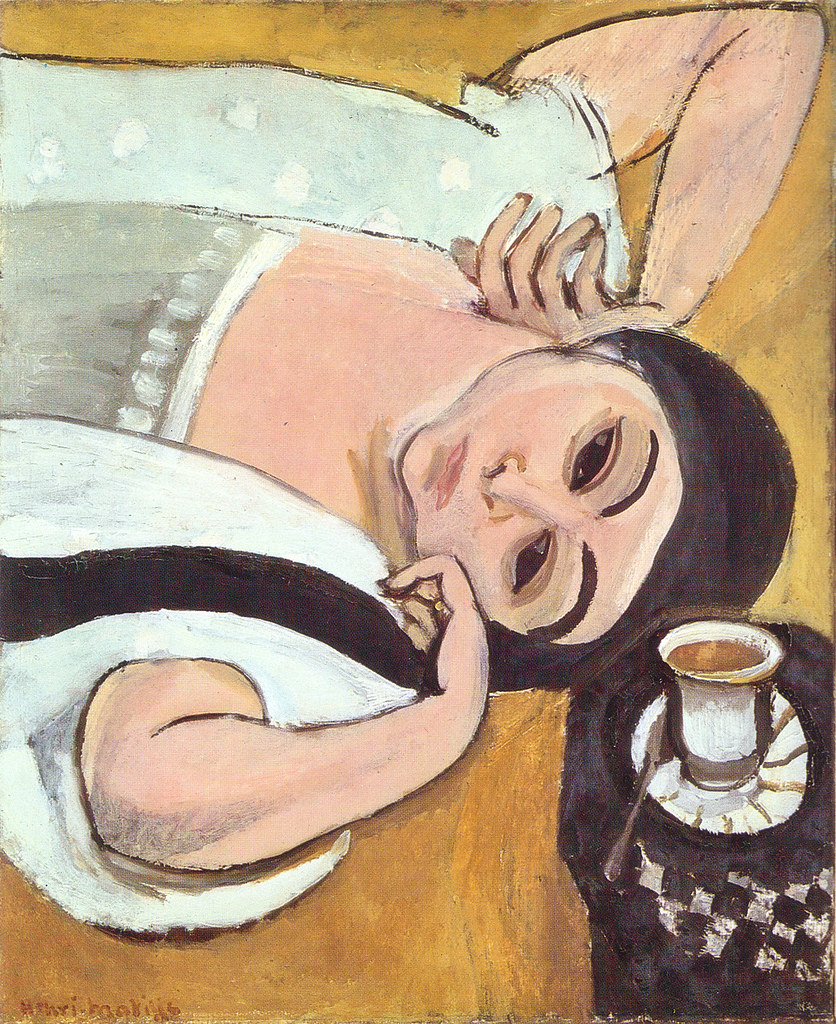
It is not possible to go through this painting without thinking about how long Laurette has not slept – and what happened to leave her in that state.
Alas, man cannot live on coffee alone. Tea is also needed, and in my opinion, it is a drink that contributes to happiness. What I like most about tea is the variety of flavors. Green tea, black tea, and white tea among so many other options, lesser-known and perhaps even more delicious.
In painting, tea is often depicted by the Impressionist Mary Cassatt who, with delicacy, shows women in elegant attire enjoying a good tea. There is not only the representation of the cup of tea but of all the apparatus that composes what, in many places, is a ritual.
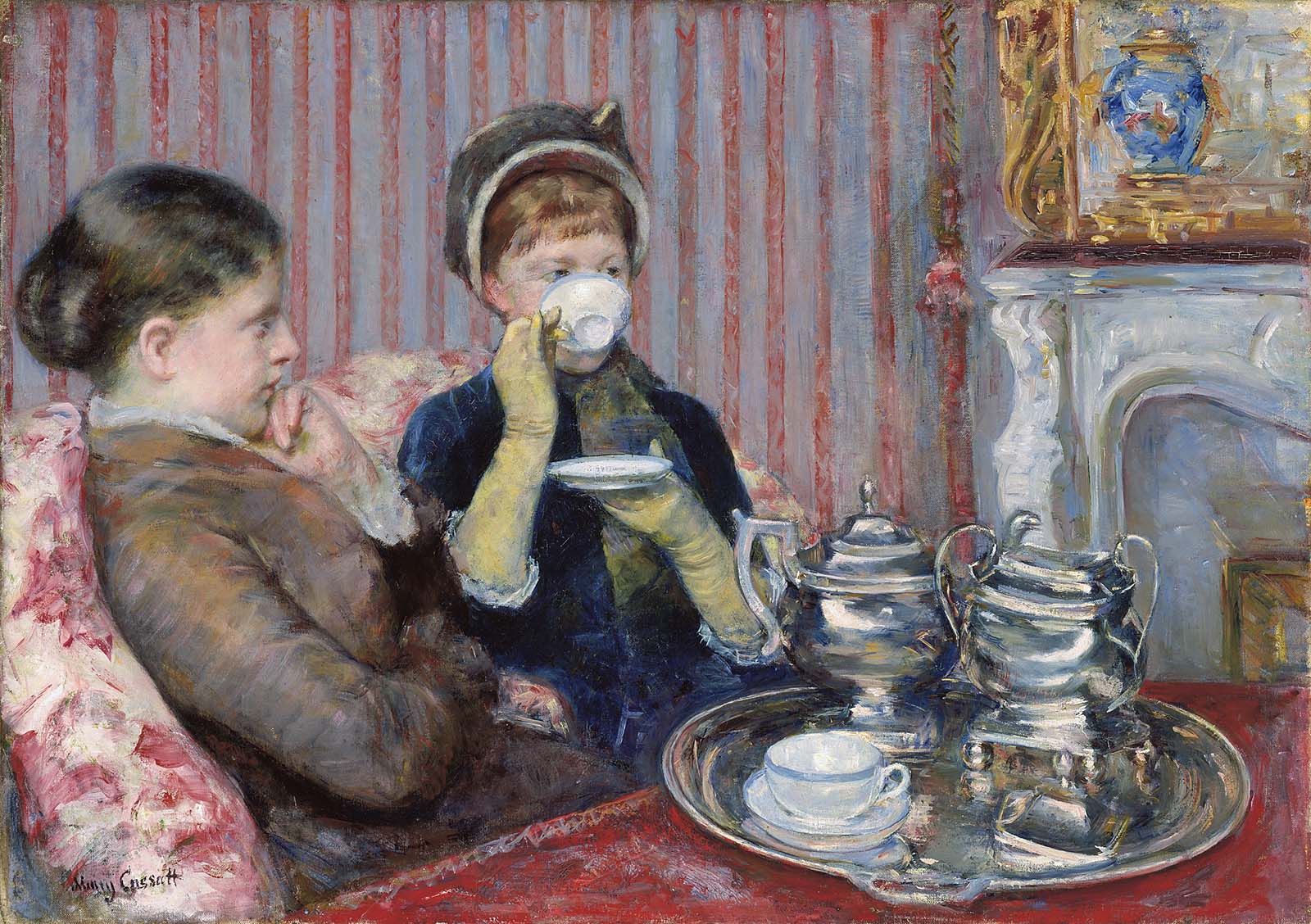
Many paintings represent women sharing tea time. But while Mary Cassatt chose to represent them inside the house, Henri Matisse (yes, him again!) decided to show the tea ritual outdoors. The two women look directly at the beholder, and they are accompanied by a handsome puppy. Look at them one more time. Do not they look like they’re inviting you to tea?
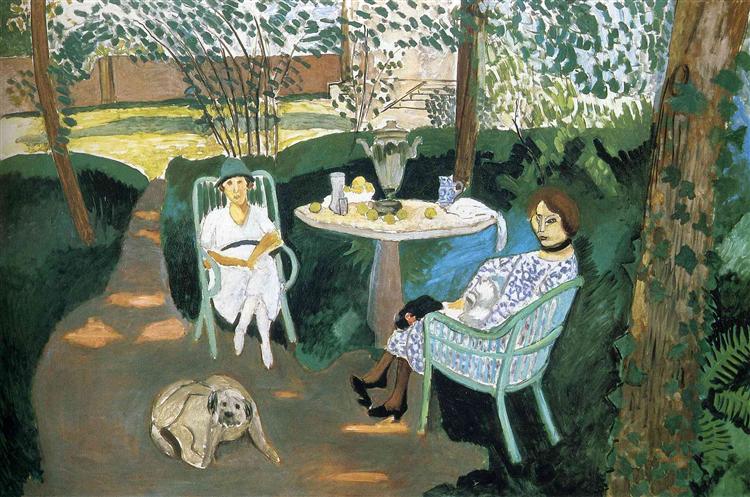
But not only on stimulants like coffee, or calming drinks like tea is the history of art made. Pablo Picasso is responsible for one of the most famous works of art involving drinks. The woman with the hand on her chin, looking forward, in shades of blue, is one of the best-known works of the Spanish painter. The drink? Absinthe.


Absinthe is a very bitter alcoholic beverage, which is made from the leaves of a herb of the same name. It was very popular among the Parisian artists of the late 19th century. In addition to Picasso, other artists also represented people drinking absinthe, among them Edgar Degas. The two paintings, both Picasso and Degas, are in my opinion somewhat depressing. Note that the three portrayed show a deep dejection. It seems that they share, besides absinthe, sadness and a lack of prospects.
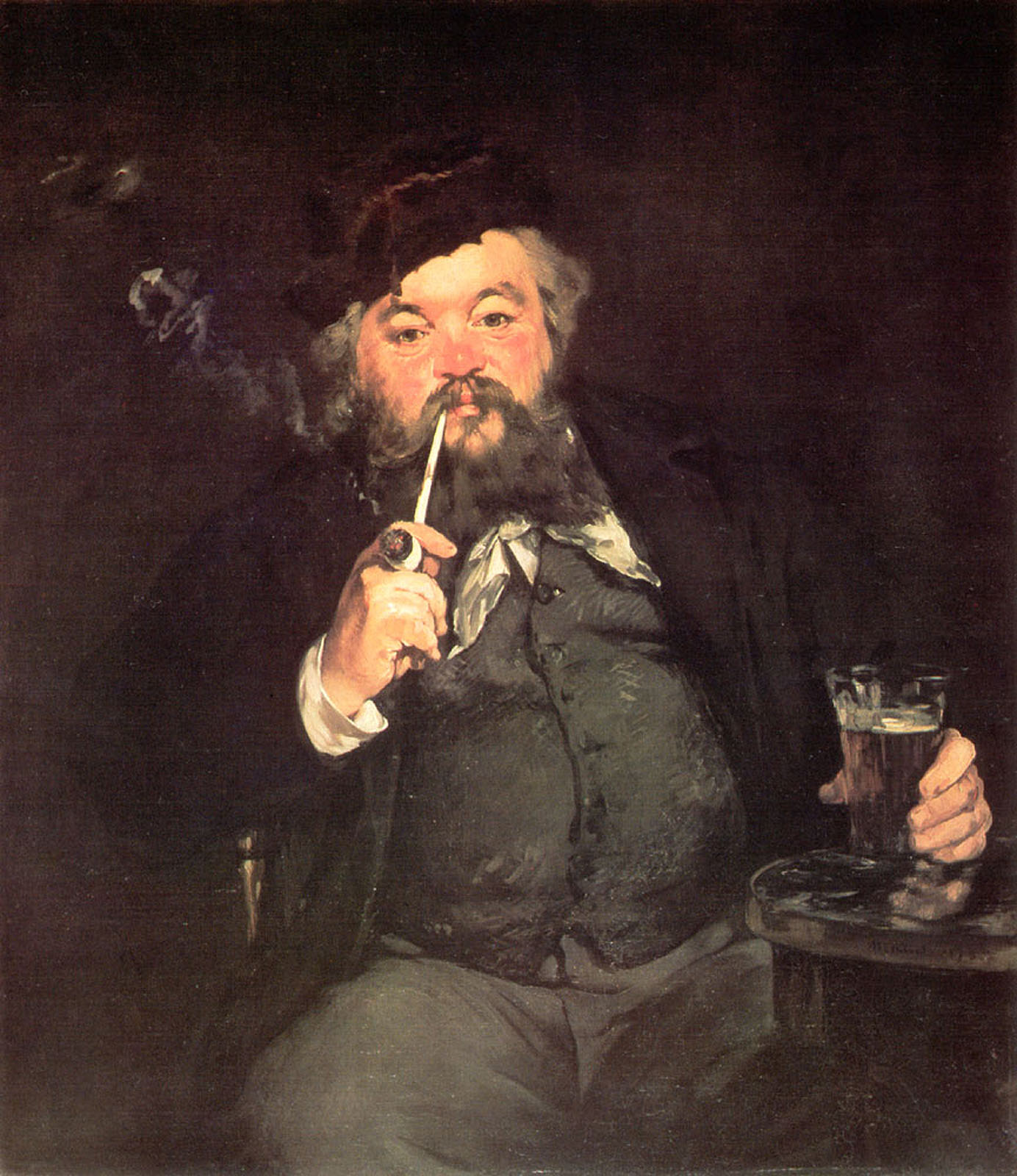
Almost ending our list of drinks in art, we could not forget the good old beer which was magnificently represented by Édouard Manet. Produced from the fermentation of cereals, it is one of the most consumed drinks in the world – but we must always remember to consume it in moderation!
From the perspective of Cubism, the malt drink was also presented by Spanish painter Juan Gris in this beautiful composition.

To finalize our selection, I will show you this beautiful painting by Mary Cassatt – one of four female Impressionists you shouldn’t forget. After all, milk is an important beverage regardless of age, the first drink we experienced, which in art is also well represented.
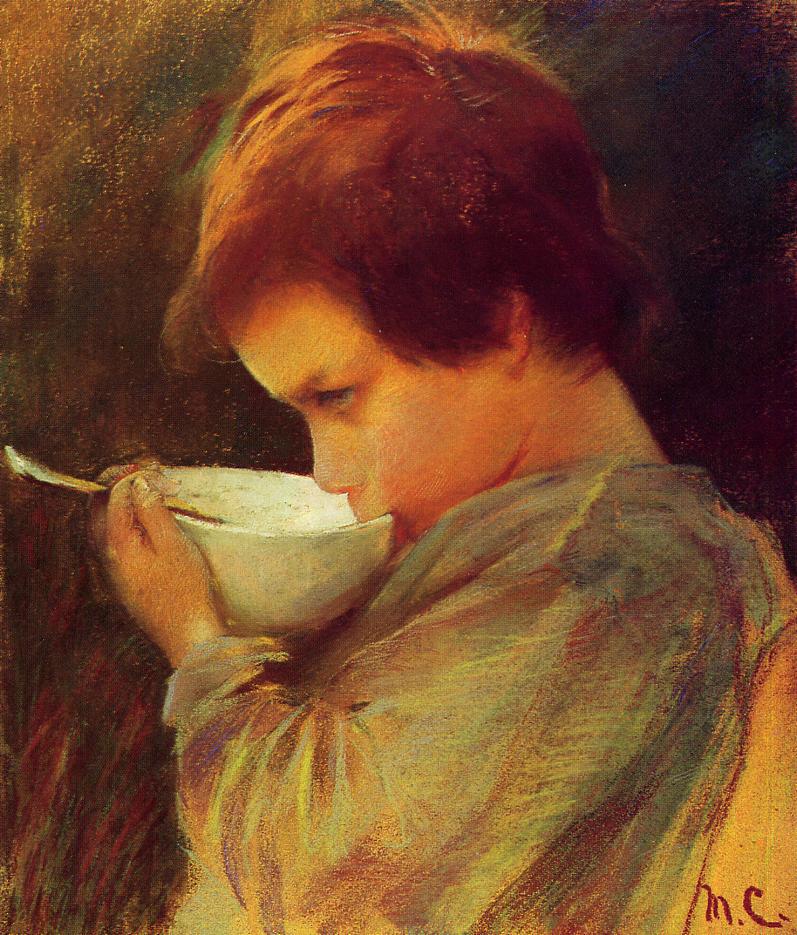
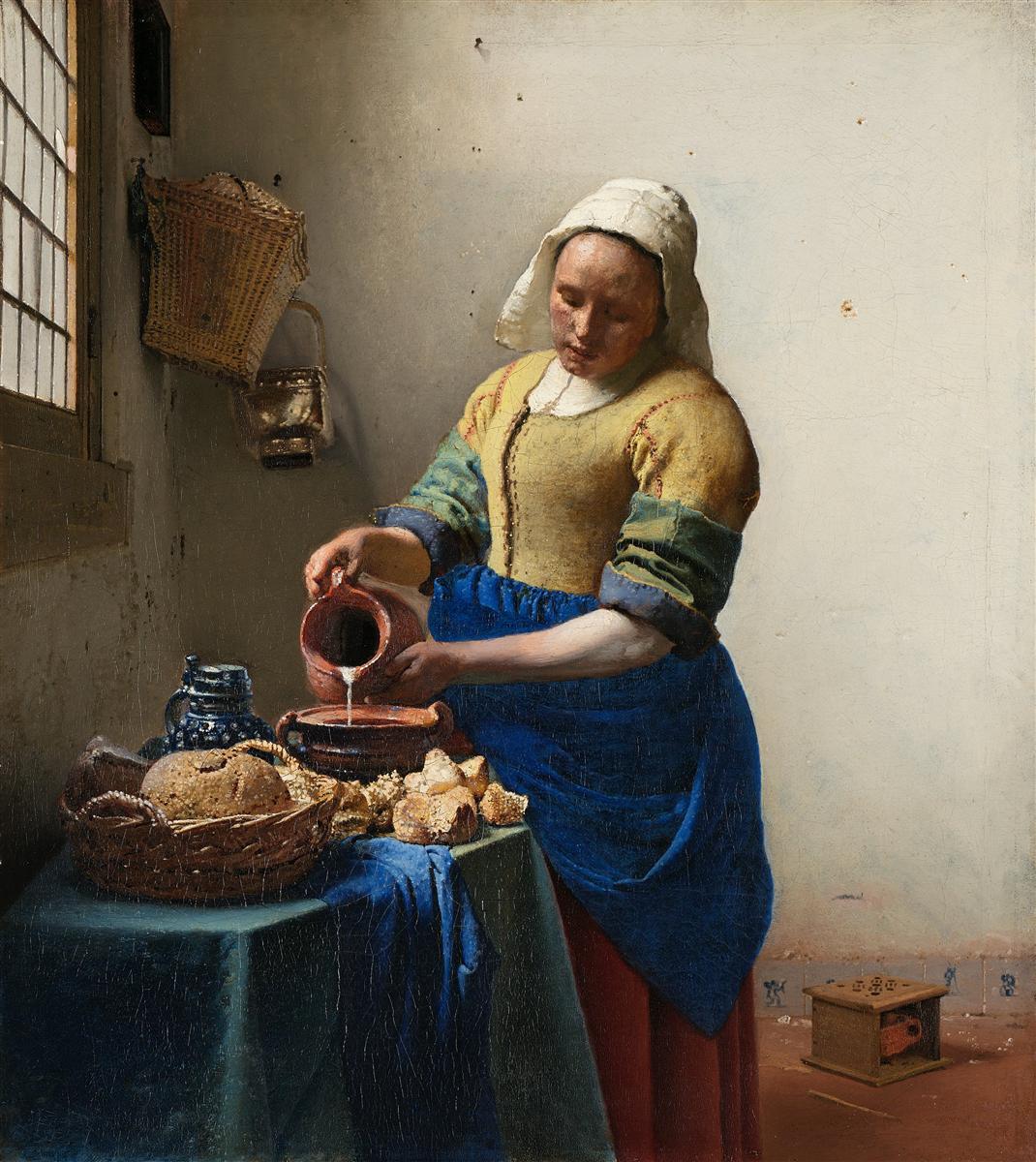
And speaking of milk, we could not forget one of Johannes Vermeer’s most iconic works: The Milkmaid. Particularly, it is one of the works that I most appreciate. The composition is very beautiful and the tone of bucolic realism that Vermeer gives to this painting is very attractive. I imagine that the girl is using the milk to prepare a cake, and not necessarily to take to her master, but who knows?
Wow, after so much talk of drinks I’ve become thirsty. I think I’ll stop here and see what I have in my refrigerator. Today the best option is water, after all, water is the most important drink, isn’t it? And have you drunk enough water today?
DailyArt Magazine needs your support. Every contribution, however big or small, is very valuable for our future. Thanks to it, we will be able to sustain and grow the Magazine. Thank you for your help!